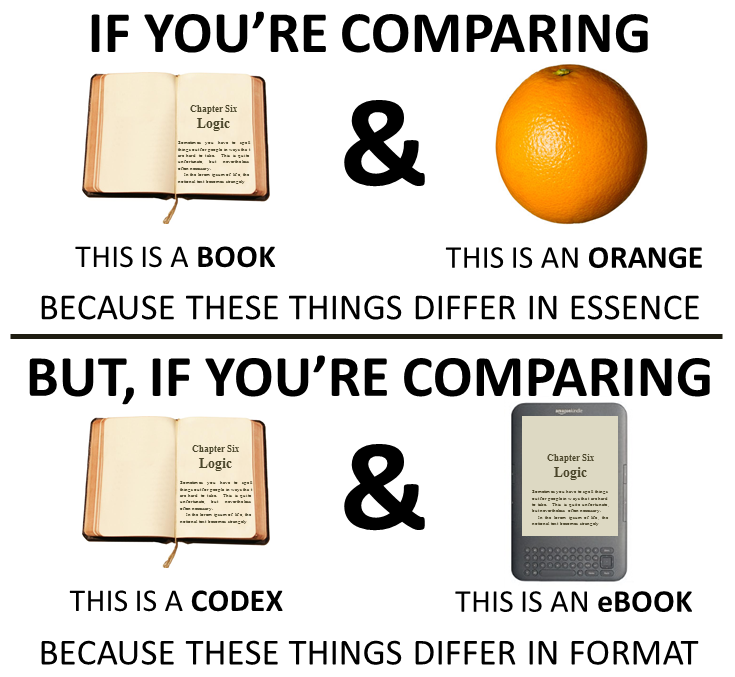Here’s a little chart for all of the oh-so-cooler-than-thou coolsters out there who like to show their anti-hip hipsterdom by poo-pooing technology, and strut their appreciation for traditional literature by displaying their ignorance of its history.
So, you say you prefer “real” books to Kindle and Nook? What people read on Kindle and Nook are real books. When you say “real” books, you’re talking about codices — singular codex — which, early in the Christian Era, largely replaced the scroll format that had dominated book presentation for thousands of years.
The Book of Genesis is a book whether its rolled up around a stick, bound up in a stack of leaves, or zapped to your ereader as a series of 1’s and 0’s.
Yes, we often use “book” as a synecdoche for “book in codex form.” But, regardless of format, the book is the words, not the format through which the words are presented. Here are some images to explain the concept:

Just in case that doesn’t make it clear:


This weeks book links have not been banned | J. Nelson Leith
September 26, 2014 at 11:00 am
[…] King argues that books—by which he means paper codices—are going to be around for a long time, and I agree with […]
Prejudice against e-books would be funny, if it weren’t so dishonest, backward, and corruptive of science | J. Nelson Leith
December 23, 2014 at 9:45 am
[…] book is the text. Bound sheets of paper are a book format, properly called a “codex” when discussed in contrast to other book formats. A book is a book whether it is presented as a scroll, or a codex, or an e-book, or an audiobook. […]
The literary vacuousness of codex fetishism revealed | J. Nelson Leith
January 7, 2015 at 11:33 am
[…] book is the content, not the format. A stack of bound leaves is in codex format, a rolled sheet is a scroll, a recording reading is an […]